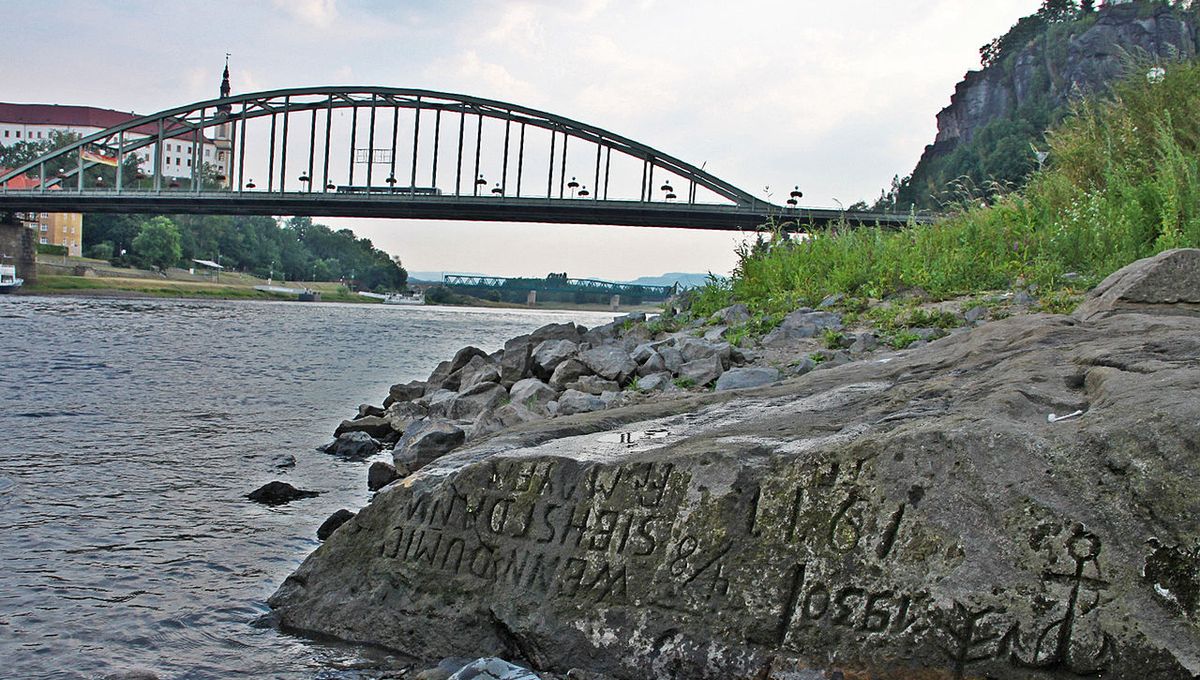
As heatwaves and droughts continue to grip much of Europe, “hunger stones” from the past have been revealed by the parched rivers and announced a dire warning: “if you can see me, weep.”
Hunger stones are a hydrological monument found in some rivers of Central Europe that are revealed when water levels drop. Dating from the 15th to 19th century, the stones were embedded in dried-up riverbeds to warn people in the future that hard times could be near.
Some stones also feature watermarks detailing the dates of previous droughts, providing historians and researchers with some tantalizing primary evidence.
“It expressed that drought had brought a bad harvest, lack of food, high prices, and hunger for poor people. Before 1900, the following droughts are commemorated on the stone: 1417, 1616, 1707, 1746, 1790, 1800, 1811, 1830, 1842, 1868, 1892, and 1893,” geographers from Masaryk University wrote of one of the most famous hunger stones in a 2013 study about droughts in Czech history.
The stone lies in the Elbe river in the northern Czech town of Decin, not far from the German border. Carved into the rock, you can read the words “Wenn du mich siehst, dann weine,” which translates to “If you see me, weep.” Yikes.
Europe is currently in the midst of the worst drought in 500 years, with almost half of the continent impacted by a severe shortage of rainfall. It’s also been grappling with record-breaking heatwaves this summer.
By no surprise, this searingly hot and dry weather has resulted in the hunger stone reappearing across Germany and the Czech Republic.
However, this is not the first time the hunger stone has emerged in recent memory. Back in 2018, Europe suffered yet another bout of heatwaves and drought that revealed the hunger stones, as well as some unexploded bombs from World War Two.
Drought is a recurrent feature of the European climate, but we know that things were particularly parched in the Late Medieval Period. A study from 2015 looked at tree rings to discover that Central Europe suffered relentless “megadroughts” in the 11th and mid-15th centuries CE. Perhaps it’s no surprise that hunger stones became a common feature of Central European rivers around this time, as if to prepare locals for the hard times ahead.
This is unlikely to be the last summer we see the dreaded hunger stones. As the climate crisis worsens, parts of the planet will have to endure longer, more intense, and more widespread heatwaves. Global warming will also shift Europe’s weather and wind patterns, making it more likely that air pressure systems will get stuck above the continent, creating abnormally long periods without precipitation.
Source Link: What Are "Hunger Stones" And Why Did They Terrify People In Europe?